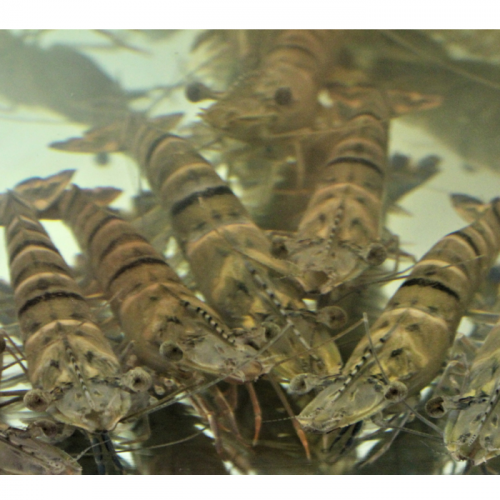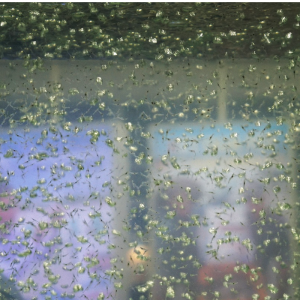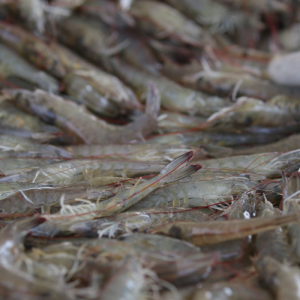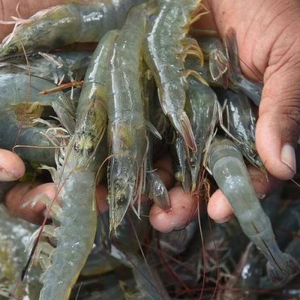
Shrimp Aquaculture and Competitive Exclusion Of Pathogens
| Tue, 20 Oct 2020 - 16:31
Probiotics – live microorganisms that offer health benefits to hosts when provided in suitable amounts – are becoming increasingly popular antibiotic alternatives to promote growth and prevent disease in shrimp aquaculture. While there is limited knowledge on their precise mechanisms of action, evidence is strong that they are able to provide probiotic effects through the competitive exclusion of pathogenic bacteria, enhancement of the shrimp immune response and antiviral effects, and nutrient and enzymatic contribution to shrimp digestion.
Approximately 20 genera of bacteria have been shown to have a probiotic effect in shrimp, although most of the research has focused on Bacillus and lactic acid bacteria (LAB), such as Lactobacillus, due largely to their prevalence and successful application as probiotics in mammals and poultry. Probiotics can be administered orally with the feed (including bioencapsulation with live food vectors such as artemia), directly into the water as purified cultures or spores, or within a fermented growth media.
Probiotic species are often isolated from the intestines of shrimp and the surrounding water or sediment of their environment. But they have also been isolated from fruit waste filtrates, curd, fermented soybeans and pickles, and the intestines of other species. For example, in the case of the latter, shrimp probiotic Lactobacillus species have been isolated from the digestive tracts of chickens and fish. Commercial probiotic treatments, which largely contain LAB and Bacillus spp., have also been tested for their probiotic effects in shrimp.
Also read: Using a Probiotic Mixture is More Effective Alone
Considering the rise of antimicrobial resistance (which is predicted to result in 10 million deaths by 2050 if the current trend continues; Meade et al. 2020), the potential insights gained from such investigations extend far beyond the field of probiotics in shrimp aquaculture, because these probiotic species produce antimicrobial substances that have not yet been identified, making them ideal candidates for bioprospecting for novel antimicrobial therapeutics.
This article – adapted and summarized from the original publication (Knipe, H. et al. 2020. Probiotics and competitive exclusion of pathogens in shrimp aquaculture. Reviews in Aquaculture, Vol 12(3):1-29) – discusses our current understanding of the mechanisms of competitive exclusion and their application to improve the selection and application of probiotics, future directions for the selection and application of probiotics in the development of effective microbial management strategies in shrimp aquaculture.
Competitive exclusion of pathogenic bacteria
Competitive exclusion is where co‐occurring bacterial species in the same ecological niche compete for limited resources (nutrients and space) through two competitive strategies: exploitation and interference competition. Exploitation competition is indirect, typified by rapid resource consumption (restricting supply to competitors and investing in growth), whereas interference competition takes place when one organism directly harms another, for example, through the production of antimicrobial compounds.
Exploitation competition includes mechanisms that increase the rate at which nutrients are captured and utilized, in relation to the competitors. Nutrient capture can be improved by the secretion of extracellular molecules that break down complex macromolecules, consequently making nutrients more readily accessible. These extracellular excretion molecules include enzymes and compounds that access insoluble iron.
Also read: Research Backs Value of Probiotics in Shrimp Ponds
These mechanisms can be considered co‐operative traits, as the “public goods” produced are accessible to all and may benefit a population. Not all members of that population necessarily invest resources in the production of the compounds, and the bacteria producing materials for enabling nutrient capture are vulnerable to inter‐ and intra‐specific competition from others, who save resources and invest them in growth.
The efficiency and speed with which microorganisms utilize nutrients can provide another competitive advantage. Optimal allocation of resources can maximize growth rates. For example, switching between metabolic strategies depending on substrate availability, such as from the higher energy‐yielding respiration process to fermentation, even when glucose is available in excess, to maximize growth rates. This phenomenon, termed “overflow metabolism,” has been observed in a number of fast‐growing bacterial and fungal species.
Exploitation competition for space can be achieved through rapid colonization of uninhabited niches, or through competing with populations that are already established. The production of compounds and receptors that bind to specific surface features can provide a competitive advantage for the colonization of unoccupied niches, as well as prevent displacement by invaders. Furthermore, attachment, while decreasing mobility, is critical for biofilm formation (surface‐attached microbial communities).
The expansion of adhesive cells in biofilms can also aid the removal of non‐adhesive cells from the population. Cell aggregation of the same genotype can also provide another competitive advantage by sharing resources and increasing tolerance to antimicrobials. However, there is strong competition within these biofilms, in which nutrients become limited regionally. On the other hand, to compete with biofilm formation, many species produce molecules that can actively stimulate dispersal of other species (without killing them). Alternatively, some species can disrupt biofilm formation.
Also read: Probiotic Capacity of Pseudovibrio Denitrificans Isolates From a Marine Sponge
Interference competition typically involves the production of antimicrobials, and there is substantial experimental evidence to support the hypothesis that antibiotics are primarily used as weapons. It is plausible that some species have evolved to use certain antimicrobials solely as weapons, whereas others have multiple functions.
Even though most probiotics in shrimp aquaculture are screened and selected for further testing based on their ability to antagonize bacterial shrimp pathogens in vitro, it is clear from reported research that information is limited about the mechanisms through which this growth inhibition takes place. Additionally, the investment of energy into interference mechanisms (the production of extracellular antimicrobials) by shrimp probiotics implies that they may be useful targets for bioprospecting for novel antimicrobial therapeutics.
Considerations for the selection of shrimp probiotics
Most probiotics used in shrimp aquaculture appear to be competitive life strategists, because they are frequently selected based on their ability to produce extracellular antimicrobials. Because of the typical practices in shrimp aquaculture, in which ponds are disturbed by chemical treatments, weather events and disease, these probiotics may not always be the most effective choice. Instead, certain environmental conditions and disruptions are likely to favor the proliferation of ruderal (species that prosper in situations of high intensity disturbance and low intensity stress) life strategists.
To compensate for this, frequent treatment may be necessary to establish the probiotic (competitive life strategist) within the microbial community at the required abundance and achieve the desired effects. This may in turn affect the microbial community structure of the system and further favor ruderal life strategists that invest in exploitation mechanisms. Improper use of probiotic treatments may potentially lead to conditions which favor pathogenic invasion, for example by using species that compete with indigenous beneficial species or alter the overall structure or function of the community.
Therefore, elucidating the mechanisms underlying growth efficiency and competitive strategies employed by potentially probiotic and pathogenic species, as well as understanding their optimal environmental conditions, are needed to develop the most effective microbial management strategies to both prevent and treat disease. For example, tailoring treatments so that they contain species, or strains, that can competitively exclude specific pathogens using multiple mechanisms will increase the likelihood of successful pathogen exclusion, particularly if the pathogen becomes resistant to a mechanism, or there is a new (or opportunistic) pathogenic invasion.
Also read: Probiotics in Aquaculture
Patin et al. (2016) designed a workflow that aims to determine whether interference or exploitation competition is employed by using a series of simple inhibition assays. Applying this workflow provides a simple and cost‐effective way to assess the competitive strategy likely employed by probiotic species in vivo, although future studies should consider the extent to which in vitro models (mechanisms of antagonism) are accurate representations of their interactions with pathogens, and other competitors, in vivo. Making this distinction is of importance when considering the type (i.e. desired characteristics) of probiotic to apply to specific conditions; for example, to improve disease resistance before a pathogenic invasion, or in response to an environmental disturbance, such as disease.
Theoretically, competitive life strategists would be more suited to prophylactic treatment, as they are selected for in undisturbed environments, while ruderal life strategists would be best applied to reduce the severity of disease, as they are selected for in disturbed environments. This also highlights the importance of applying ecological theory to develop effective probiotics for disease prevention in shrimp aquaculture.
Potential probiotic identification based on the use of limited methods, such as cell‐free extracts or diffusion assays exclusively, is selective of interference‐based competition strategies due to the antimicrobial (and diffusible) properties of the extracellular metabolites. The culture conditions of potential probiotics may not stimulate inhibitory compound production or increase the activity of the compound.
The limitations of culture‐based probiotic selection methods, combined with the current focus on the ability of probiotic species to inhibit the growth of Vibrio species, may overlook the capability of many putative probiotic species for shrimp aquaculture. While pathogenic Vibrio species are undoubtably an important target for potential probiotics to antagonize, screening based on in vitro growth inhibition of a limited number of specific pathogens (i.e. Vibrio) may be inadvertently polarizing the type (i.e. competitive strategy) of shrimp probiotics available.
Therefore, closer attention to characterizing the underlying mechanisms by which probiotics inhibit the growth of these pathogens in vitro, combined with our increasing understanding of their effects in vivo, will enable us to better evaluate and develop our screening and selection methods. Probiotic treatment is able to alter the microbial community structure in the shrimp gut and confer resistance to pathogens such as V. parahaemolyticus.
Also read: Can Probiotics Make Shrimp Farming More Environmentally Friendly?
Probiotics targeted specifically at Vibrio spp. may increase the risk of disease in the event of an invasion by another species that the probiotic cannot inhibit, doing so by lowering the probability that other members of that community provide antagonistic traits. Stimulation of the shrimp immune response by such probiotics should, theoretically, mitigate some of these effects. However, it remains to be tested that a probiotic with such effects is able to enhance resistance to multiple pathogens.
The current trend is to identify novel probiotics, and we suggest that emphasis should be placed on the development of complementary, culture‐independent, methods of potential probiotic identification and characterization. With the increasing affordability of sequencing approaches, whole genome sequencing of probiotic species would benefit our understanding of the potential mechanisms of probiotic effects and allow us to make more informed decisions about the suitability of such species.
Furthermore, metagenomic [the study of genetic material recovered directly from environmental samples], transcriptomic [quantitative science that encompasses the assignment of a list of strings (“reads”) to the object (“transcripts” in the genome)], and metatranscriptomic [the science that studies gene expression of microbes within natural environments] studies, complemented by proteomics, would allow for more thorough investigation, assessment and development of probiotic treatments in shrimp aquaculture.
Conclusions and future perspectives
Probiotics in shrimp aquaculture are often screened and selected for in vivo testing based on their ability to competitively exclude pathogens in vitro. Few studies have attempted to identify the underlying mechanisms involved in bacterial growth inhibition; however, they collectively illustrate the importance of understanding the underlying probiont (aggregation of organic molecules, surrounded by a membrane, that abiotically coalesces into resemblances of living matter) – pathogen interactions, determining strain specific characteristics and not extrapolating from related strains or even species. Considering this is particularly important when evaluating the safety and suitability of a probiotic species for use in animals intended for human consumption, and consideration should be given to investigating the potential impact of probiotic treatment on the virulence of pathogens.
The application of complementary sequencing approaches such as whole‐genome sequencing of probiotic species will aid this assessment. The antagonism assays employed to screen for probiotics in shrimp aquaculture use a limited number of pathogens (i.e. Vibrio) and preferentially select for interference‐based mechanisms, which may overlook the probiotic potential of many species and possibly increase the risk of pathogen invasion. To address this, future work should focus on expanding probiotic screening methods (including the development of culture‐independent approaches) to include more species that use exploitation‐based mechanisms and pathogens with distinct mechanisms of pathogenesis.
Also read: Effect of Streptomyces Probiotics on Gut Microbiota of Pacific White Shrimp
Tailoring treatments so that they contain species, or strains, that can competitively exclude specific pathogens using multiple mechanisms will increase the probability of successful pathogen exclusion; particularly if the pathogen becomes resistant, or there is a new (or opportunistic) pathogenic invasion. The impact of probiotic treatment on the shrimp gut microbiota and disease resistance should also be thoroughly considered to avoid reducing the abundance of other ecologically important species. Special consideration should be given to identifying and testing probiotics that could prevent the beginning of disease with limited effects on the microbial community structure and function.
Additionally, the efficiency of treatment may be improved by considering the competitive life strategy of the probiotic species. Future studies should examine this by validating the competitive strategies used in vivo¸ and designing pathogen challenge trials that compare the effects of probiotic administration, prior to and at the onset of disease or other such environmental instabilities, on the shrimp gut microbiome and disease resistance.






















